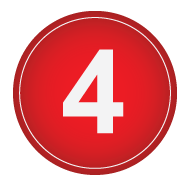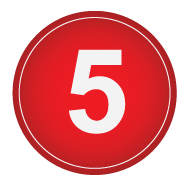Pointshogger 101
Pointshogger 101 is our guide to get people started in the miles and points world. However, with the changing times, we also added more information on having a cash back strategy as well. Pointshogger focuses on optimising rewards for Canada, which includes miles, points and cash back.
Once you get familiar with the 8 steps below, the posts that we write will make a lot more sense with this context (note: we mention the ideal ways to look for information on our blog at the bottom of this page). Keep in mind that in general, the loyalty/reward industry is based on how much effort you put in. Basically, the harder you work, the more you will be “rewarded” (pun intended). Below are some fundamental steps to maximise earning, redeeming and tracking rewards to get you going!
—————————————

Step 1 – Identify Spending Habits
Identify all your spending habits while breaking them down into detailed categories (e.g. gas, groceries, drug stores, movies, restaurants, hotels, clothes, bill payments). Ideally, highlight the retailers that you more frequently shop at. Estimate how much spending on each category and stores throughout the year. The more specific you are, the more you will optimize your miles and points portfolio.

Step 2 – Sign Up for Loyalty Programs
Once you have identified spending habits and frequent stores, sign up for all the loyalty programs relevant to your spending. More specifically, sign up for the loyalty programs of the places that you are spending your money. For travel, it would be airlines, hotel and car rental programs. Most programs are free to sign up for. If they are not free, then you would need to calculate whether the benefits that you are receiving with a program outweighs the fees that you would need to pay. For example, Costco has a membership fee that many people pay, because they are getting more value than the annual fee that they are paying. However, if you are just getting started, better to focus on free programs first.
Keep in mind that even if you are going for a cash back strategy with credit cards, keep in mind that certain retailers also have free loyalty programs that you can earn rewards with, which is what we call “double dip”. So you can earn rewards with the retailer along with cash back on a credit card.

Step 3 – Tracking Loyalty Accounts
This might be one of the most important steps, as most people give up when they realise how much work is needed to keep track of so many accounts. To make your lives easier, sign up mileage managers. We at Pointshogger, highly recommend and personally use Award Wallet daily (you can read our review of Award Wallet) (if you like it, please support us by using our referral link).
Mileage mangers help keep track of loyalty account balances, as well as provide reminders, such as advanced points expiry notifications. If you are uncomfortable with mileage managers, you can create your own spreadsheet to track all the relevant information. The idea is to have a tracking system to be as organised as possible. The more organised you are, the more time you can spend on optimising rewards so that all of this feels more worth it!
Furthermore, to minimise the number of reward cards in your wallet, we use and recommend Stocard (you can read our review here).

Step 4 – Know Your Credit Score and Financial Situation
The reason it is important to know your credit score is because credit card sign up bonuses are one of the most lucrative ways to earn rewards quickly. It is important to understand how credit scores are calculated to ensure that you can qualify for the best cards. For example, paying off your credit card bills on time and in full each month is the most important factor when calculating credit scores. So always ensure that you have sufficient funds to pay your balance in full before using your credit card; otherwise any rewards that you earn will be nullified by the interest that you have to pay.

Step 5 – Find the Right Credit Card(s)
Be sure to learn the different types of credit card reward options. Combine this knowledge with the spending habits identified in Step 1 to determine which credit card(s) to sign up for (e.g. airline, business, cash back, hotel, student). Always watch for double and triple dipping opportunities such as higher than normal sign up bonuses, higher limited time earning ratio or first year annual fee waived promotions.
*BE CAREFUL with this step. Only apply for a credit card if it is within your means to pay off the balance on time. Otherwise, as explained in Step 4, any interest incurred on the credit card balance will completely nullify any benefits or rewards that you may receive.

Step 6 – Have a Shopping Strategy
It is best to use your credit card(s) as frequently as possible to rack up the miles and points. In addition, there are other shopping strategies to keep in mind: (1) build a running list of items that you need to buy, the further ahead you plan the better; (2) know your prices by tracking historic discounts and trends so that you will know when it is actually a good sale; (3) search for your item on shopping portals to earn additional bonus miles and points when the item is at the price point that you are willing to pay. The idea is the earn as many points as possible while paying the least amount of money for the product or service that you want.
Also note that there are also cash back shopping portals out there too, if you are focused on a cash back heavy portfolio.

Step 7 – Set a Goal
Always set a goal of what you want to use your rewards for so that you can have a specific strategy. For example, you may have a trip in mind or desire to earn as much cash back possible. Either way, the more specific the goal the better. Note that everyone’s goal can be different. A goal allows you to channel your transactions with a purpose; thus, increasing optimisation. Without a goal, you may end up racking rewards that you have no use for and then it will feel like a waste of time. Setting a goal is the key to making the work you put in worthwhile.

Step 8 – Cash Out
If they key (mentioned above) is to set a goal, then the reward is cashing out! This is when you get paid for all that hard work.
Keep in mind that loyalty programs are constantly getting hit with devaluations as time goes on (mostly because of inflation). So unless you have a cash back strategy (where you cash out regularly), you may not want to hoard your miles or points without a purpose (see Step 7). When a eventually devaluation comes, the value of the miles/points that you earned at that point in time goes down. Keep in mind that your miles and points balance do not earn any interest to keep up with inflation.
There is a saying: the best time to redeem was yesterday, but the next best time is to redeem them today. Furthermore, I would watch for double dipping opportunities when cashing out. There are can be limited time offers where you can redeem less than normal miles and points for the same reward, which essentially increases the value of your rewards.
Next page: Understanding Credit Cards
BONUS THOUGHTS. We have always suggested two approaches: (1) earn and burn, (2) diversify. You never know when a devaluation may come, so it is always good to cash out when you are ready to redeem. Also, we recommend keeping your rewards portfolio as diversified as possible so that you have more redemption options due to blackout dates and limited inventory.
FINDING INFORMATION. When looking for specific information on our blog, there are 2 main ways to do so:
- Use the Topics feature on the menu bar. By hovering on the tab, you will see a drop down menu with more specific topics to choose from.
- Alternatively, you can type in key words on our search bar found a little further under the Topics tab on the left hand side. You can type in keys words to search for specific posts.
